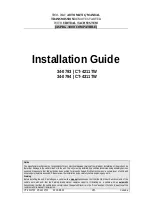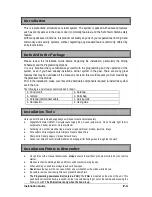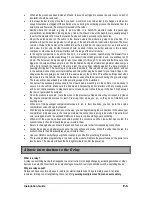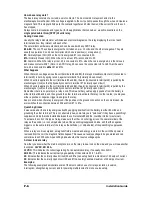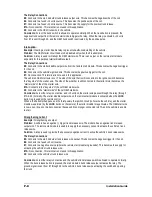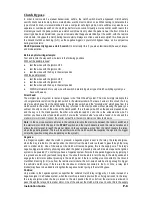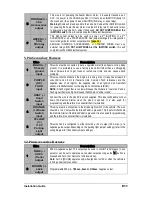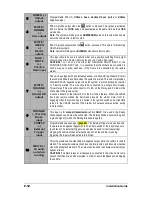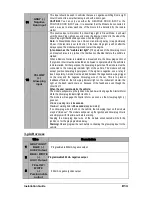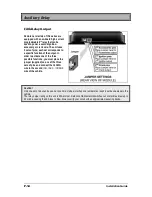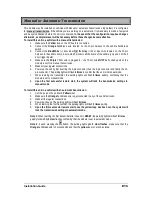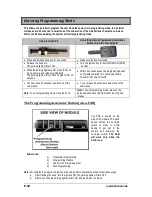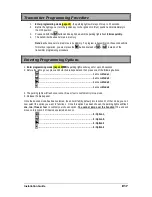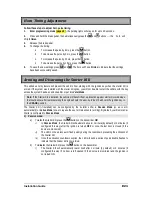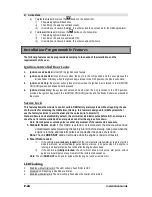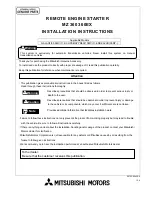
P-10
Installation Guide
wire. The relay's positive trigger wire will only show positive when the pedal is pressed (some vehicle's also
require the Ignition system to be powered). To confirm you have Positive system, hot wire the positive trigger
wire by jumping it to a 12 volt source with your fused test jumper. You should now be able to turn the key to the
start position and engage the start motor, without pressing in the clutch pedal. A relay is needed to send 12
volts to the trigger wire from the start module during start attempts.
Normally Closed (N/C):
Note: There are different types of this system used by various vehicle manufacturers; the following is used to
illustrate how these systems work in general.
A Relay is also used in these types of systems to interrupt the starter wire. In the previous two examples, the
clutch was bypassed by engaging the clutch relay; with this system you bypass the clutch by preventing the
clutch relay from engaging. When the Ignition Key is turned to the start position the relay energizes and
interrupts the start wire, when the pedal is not pressed. When the Ignition key is turned to the start position, and
the pedal is pressed, the relay does not energize, and the start signal reaches the starter motor.
In a N/C system the supply wire is connected to the relay's trigger wire at rest (pedal not pressed). When the
pedal is pressed, the connection is broken between the supply wire and the relay's trigger wire (this disengages
the relay). To verify that you have a N/C system, disconnect the clutch switch and the vehicle should start
without the clutch pedal being pressed. When you test the trigger wire with your logic probe, the trigger wire will
test as 12 volts or negative when the pedal is not pressed, it should read as an open circuit ( or Float) when the
pedal is pressed.
PLEASE NOTE
Your probe may also show feedback from the other end of the circuit. The Polarity of the Trigger wire does not
matter in this system, since all you need to do in order to bypass it is to use a relay to interrupt it during remote
starts.
Harness Description
When connecting the Module, it is important to make sure the connector with the Ground wire is connected first
before making the 12-volt connections. Should the unit be powered before being grounded, there could be
serious damage to internal components of the unit. Be careful not to power up a Module before it is
properly grounded. To avoid any accident, it is recommended to pull out the fuses from their sockets before
the installation, and to put them back during the very last steps.
6-Pin Main Ignition Harness
Wire
Description
A
RED
+12 V
Battery
Connect to the largest 12 V supply wire at the Ignition harness. Ensure that the
OEM power wire is fused for more than 30 A.
NOTE: certain new vehicles have no suitable 12 volts source at the IGNITION
switch (the 12 Volt wire is too small to supply the necessary current). In this
case, the fuse box, or the B+ connection on the battery is recommended.
B
PURPLE (+)
30 A
starter
output
Connect to the Starter wire of the vehicle (at the IGNITION switch). The source
wire should have +12 V with the Ignition Key in the CRANK position only.
C
RED
+12 V
Battery
Connect to the largest 12 V supply wire at the Ignition harness. Ensure that the
OEM power wire is fused for more than 30 A.
NOTE: certain new vehicles have no suitable 12 volts source at the IGNITION
switch (the 12 Volt wire is too small to supply the necessary current). In this
case, the fuse box, or the B+ connection on the battery is recommended.
D
YELLOW (+)
30 A
Ignition
output
Connect to Ignition wire of the vehicle. The source wire should have +12 V with
the Ignition Key in the IGNITION ON (RUN) and CRANK positions.
Warning! Some vehicles have more than one IGN wire at the IGNITION switch
for powering the heater blower motor. Use the 5th relay (pin F) and extra relays
to power up any extra IGN. wires if necessary. DO NOT JUMP WIRES at the
IGNITION switch, this will compromise the OEM electrical system.

